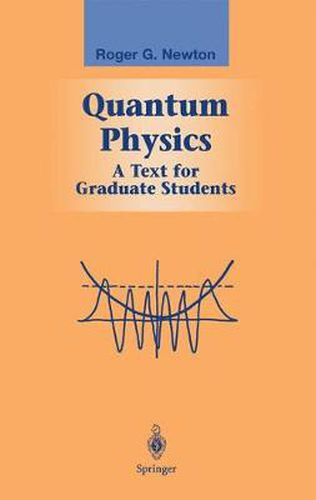Readings Newsletter
Become a Readings Member to make your shopping experience even easier.
Sign in or sign up for free!
You’re not far away from qualifying for FREE standard shipping within Australia
You’ve qualified for FREE standard shipping within Australia
The cart is loading…






This title is printed to order. This book may have been self-published. If so, we cannot guarantee the quality of the content. In the main most books will have gone through the editing process however some may not. We therefore suggest that you be aware of this before ordering this book. If in doubt check either the author or publisher’s details as we are unable to accept any returns unless they are faulty. Please contact us if you have any questions.
This text develops quantum theory from its basic assumptions, beginning with statics, followed by dynamics and details of applications and the needed computational techniques. The discussion is based on the view that the fundamental entities of the universe are not particles but fields, with the observed particles arising as their quanta. Quantum fields are thus introduced from the beginning, with a discussion of how they produce quanta that manifest themselves as particles. Most of the book, of course, deals with particle systems, as that is where most of the applications lie; the treatment of quantum field theory is confined to fundamental ideas and their consequences. For developing quantum dynamics, the author uses the Lagrangian technique with the principle of stationary action. The roots of this approach, which includes generating the canonical commutation rules, go back to a course taught by Julian Schwinger, filtered through many years of the authors own teaching. The text emphasizes that the wave function does not exist in physical three-dimensional space, but in configuration space, and it points out that the probabilistic features of the theory arise not from a lack of determinism but from the definition of the state of a system, so that many, though not all, of the counterintuitive aspects of quantum mechanics arise from its probabilistic nature and are shared by other probabilistic theories such as classical statistical mechanics.
$9.00 standard shipping within Australia
FREE standard shipping within Australia for orders over $100.00
Express & International shipping calculated at checkout
This title is printed to order. This book may have been self-published. If so, we cannot guarantee the quality of the content. In the main most books will have gone through the editing process however some may not. We therefore suggest that you be aware of this before ordering this book. If in doubt check either the author or publisher’s details as we are unable to accept any returns unless they are faulty. Please contact us if you have any questions.
This text develops quantum theory from its basic assumptions, beginning with statics, followed by dynamics and details of applications and the needed computational techniques. The discussion is based on the view that the fundamental entities of the universe are not particles but fields, with the observed particles arising as their quanta. Quantum fields are thus introduced from the beginning, with a discussion of how they produce quanta that manifest themselves as particles. Most of the book, of course, deals with particle systems, as that is where most of the applications lie; the treatment of quantum field theory is confined to fundamental ideas and their consequences. For developing quantum dynamics, the author uses the Lagrangian technique with the principle of stationary action. The roots of this approach, which includes generating the canonical commutation rules, go back to a course taught by Julian Schwinger, filtered through many years of the authors own teaching. The text emphasizes that the wave function does not exist in physical three-dimensional space, but in configuration space, and it points out that the probabilistic features of the theory arise not from a lack of determinism but from the definition of the state of a system, so that many, though not all, of the counterintuitive aspects of quantum mechanics arise from its probabilistic nature and are shared by other probabilistic theories such as classical statistical mechanics.